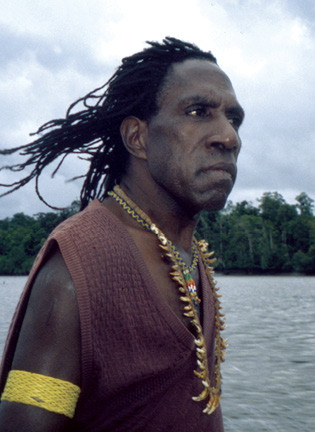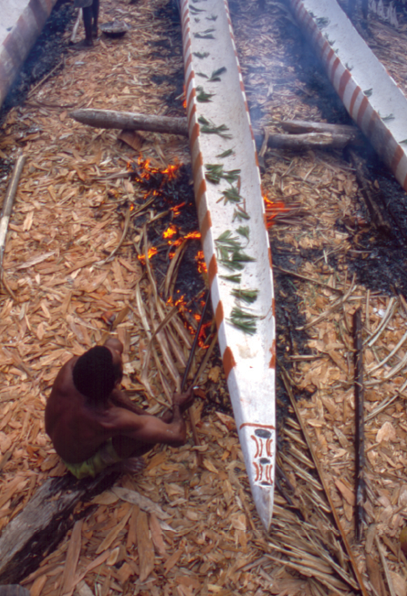
Wichita State’s Lowell D. Holmes Museum of Anthropology has turned 50 years old. Born the Museum of Man, the museum that today bears Holmes’ name houses a number of collections, including a stunning one of Asmat artifacts and artworks, many of which were collected in 2001.
The University of Wichita’s first anthropology professor, the late Lowell D. Holmes, arrived on campus in 1959. Seven years later, he came up with the idea to build a museum of anthropology.
Early on, the museum exhibited a variety of artifacts from the American Midwest and Southwest in a single room on the ground floor of McKinley Hall. In 1999, the anthropology department, along with its Lowell D. Holmes Museum of Anthropology, moved from McKinley Hall to Neff Hall.
In 2001, the museum’s holdings were infused with some 950 Asmat objects collected during a WSU anthropology team’s expedition led by then museum director Jerry Martin to the Asmat region of New Guinea, in the Papua Province of Indonesia.
At the time, WSU was the first university in 40 years allowed in the area for the purpose of collecting artifacts. The area was, after all, the territory of former headhunters and cannibals – tribal peoples known as the Asmat who spent a good portion of their day-to-day efforts on sustaining harmony among three interwoven yet distinctly different realms: the spirit world of their recently dead, the sacred world of their omnipresent ancestors and their real, physical world of people, trees, water and mud.
Martin reports, “The first Catholic missionaries came in 1953, and their accounts are fascinating. They talk of headhunting retribution raids and give example of the strange, to us, sense of justice and harmony that the Asmat have.”
For more on Holmes and WSU’s anthropology department, read “Patterns of Change.” For more about the 2001 Asmat expedition, read “Spirit People.”






